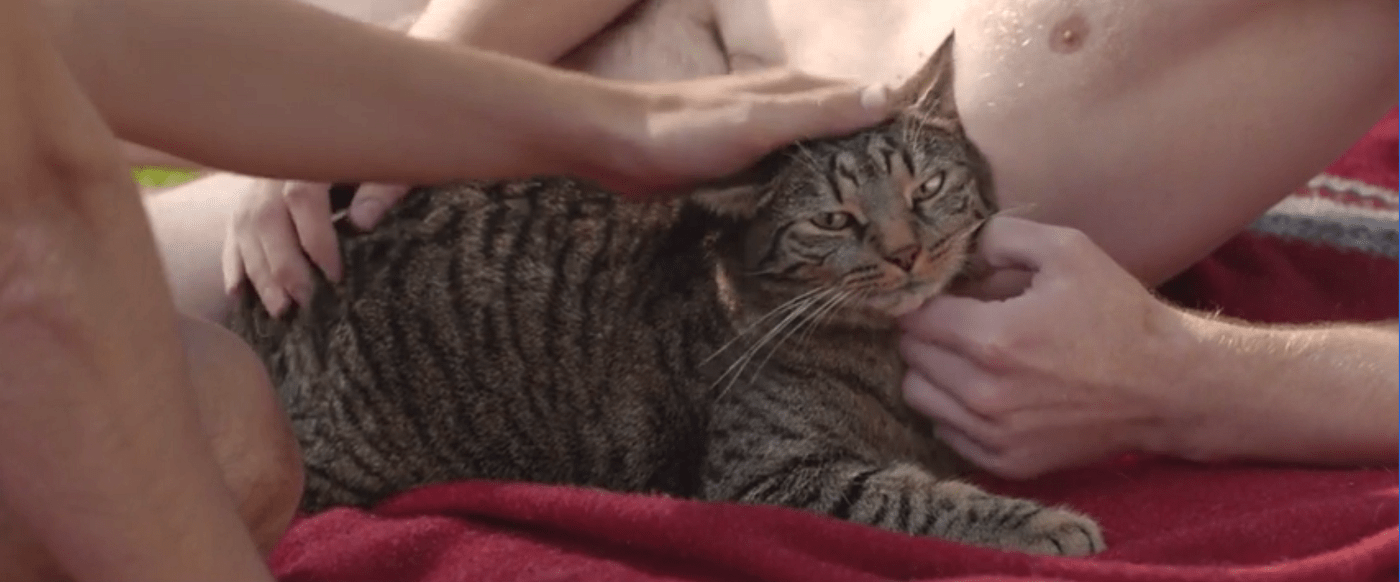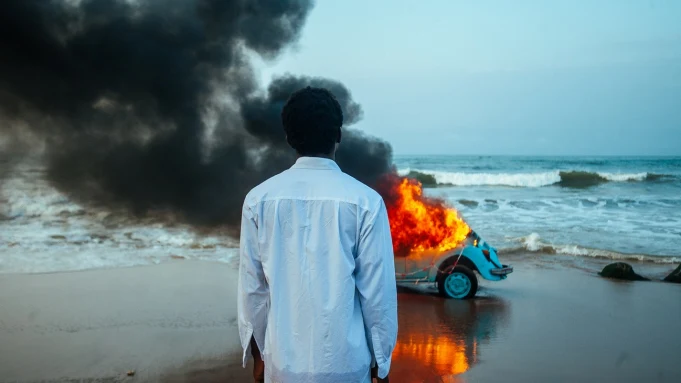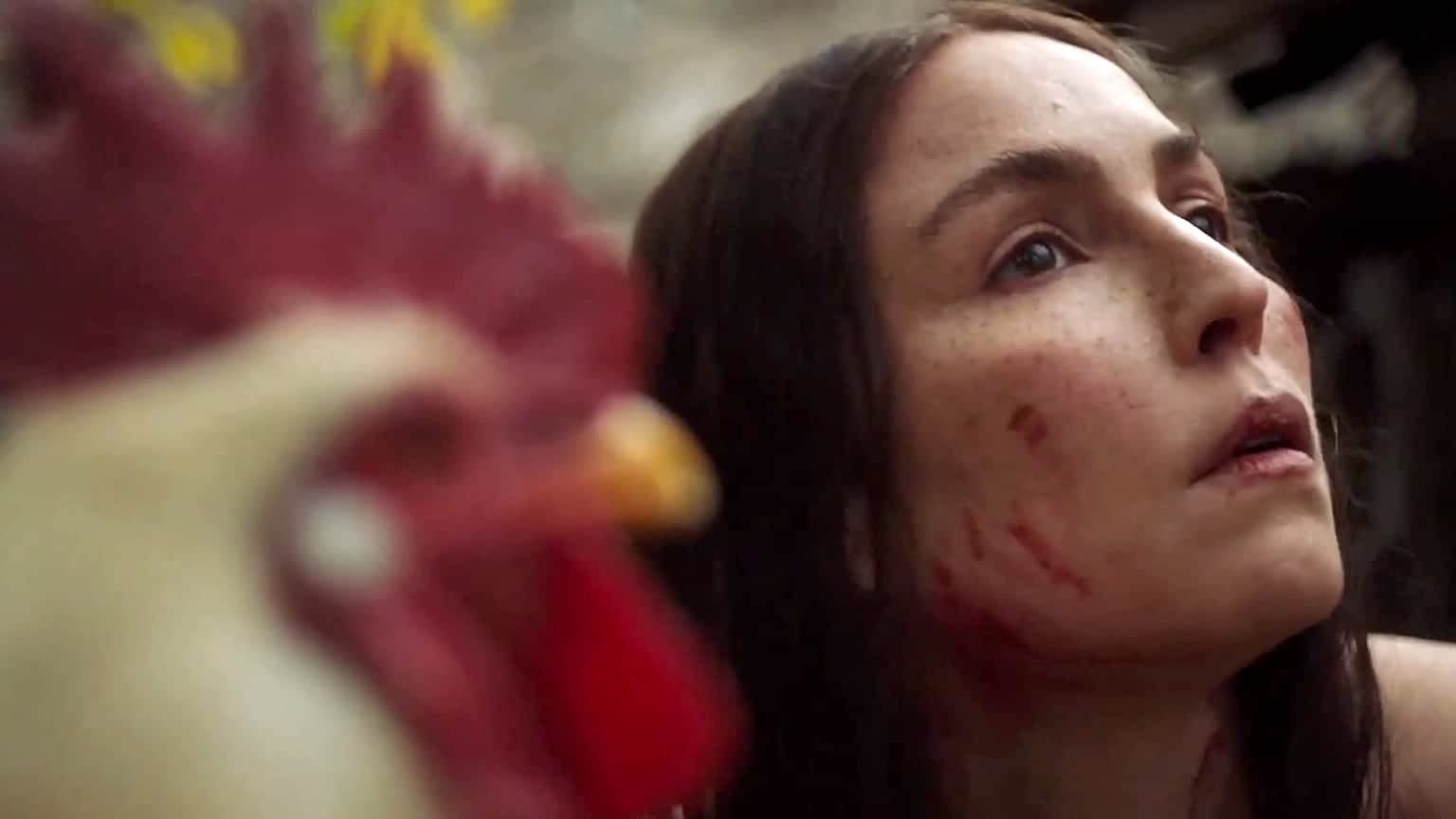
Peter Strickland’s In Fabricis visually stunning. It borrows heavily from the Italian Giallo aesthetic. The colors are super-saturated and garish like Dario Argento’s Suspiria or Mario Bava's Blood and Black Lace. The soundtrack employs a lot of synthesized harpsichord and dissonant clusters of sound like a Lucio Fulci film.Lastly, In Fabric has that strange sexual undercurrent rumbling through it that is so typical of all Giallo. In Fabric combines all these elements to create something voyeuristic and taboo that is more unsettling than arousing.
The film was made in 2019 during A24’s horror renaissance. Amidst all the blockbusters like Hereditary, Midsommar, and The Witch, somehow I missed hearing about In Fabric. It is a cinephile's Smörgåsbord, with not just Italian horror references, but bits stolen from The Shining, Nosferatu, Blue Velvet, and even Young Frankenstein.
In Fabric deftly balances drama, horror, experimentation, and comedy in a fluid, but slippery gestalt. Peter Strickland, the director, manages to tip the film just over the top into parody, but then pull it back before it succumbs to complete comedy. There are absurdist currents, as well as unnerving surreal elements. It's a multi-layered film. It not only satirizes horror films, but addresses consumerism, and corporate culture as well.
In Fabric has a quality reminiscent of Don Delillo’s novel White Noise. They both see humanity as being in a perpetual state of pseudo-hypnosis. We are all just a little foggy as we move through a world of seductive advertisements and welcoming shops. Consumerism is forever fluffing the pillows and adjusting the lighting, trying to set the mood for consumption.
In Fabric centers around a department store where the gothic, Tim Burton-esque staff float like mythical sirens, beckoning you to fulfill your dreams with retail. They are bizarre creatures that sound like a mixture of Roland Barthes, Foucault, Deepak Chopra, and a 19th-century vampire. A shopper, who is concerned that the size of the dress she is buying is not right, is advised by a saleslady, “Our perspectives on the specters of mortality must not be compromised by an askew index of commerce.” Later, the store’s owner explains to a customer, “Like a whisper in an ocean, like a feather in a storm, the dress of deduction finds its character in a prism of retail abstraction.”

Amidst all of this, there are choppy, little montages of smiling, vapid models, mannequins, and static-filled television commercials blended with a heavy sense of dread. Many of the ads seem like they come from the 1970s. Older advertisements always appear ludicrous in their blatant attempt to influence us, but of course, the same dynamic still exists in current advertising. Current advertising camouflages its absurdity with the latest fashion tropes and cultural memes. As soon as those tropes and memes fall out of fashion, the absurd nature of the commercial is revealed. Commercials are not meant to last, they are meant to take the pulse of the public at a specific time and place. The appearance may change, but the message is always the same. Mostly, it comes down to, “Buy this and you will get sex,” for men, and, “Buy this and you’ll get a husband,” for women.

The advertisements in In Fabric help fuel the sexual current in the film. In Giallo books and films, sex is part of the package to help sell the product. They all have prurient nude scenes, and some include clumsy soft-core sex, but even though the sex is just shoved into the film in order to sell tickets, it often adds a weird Freudian subtext. Murder and supernatural forces are blended with sexual desires to produce a kind of id-inspired fantasy, where all our animal impulses mingle.
There is a sexual scene in In Fabric that captures this weird mix of sex, violence, and taboo. After the store closes, two of the salesladies undress and wash a mannequin, while their creepy boss watches them and masturbates. They peel off the mannequin’s clothes and begin to caress its erogenous zones. When, finally, one of the ladies slips off the mannequin’s panties, she reveals that the fiberglass figure has real pubic hair. When the boss orgasms, we see a close-up of something that doesn’t quite look like semen fly across the screen. Later, the ejaculation will be visually refrained as shattering glass sprays the face of a mannequin that has appeared in the middle of a road. The mannequin causes a car to swerve and crash, hence the shower of glass. It both parodies and pays homage to David Cronenberg, and maybe Lucio Fulci too. It’s a wonderful bit of cinema craft nestled inside a parody of cinema craft.

There are menacing mannequins throughout the film. They escape the bounds of the stores and appear in people's dreams, or odd places they ought not to be. They recall films like Peeping Tom, Maniac, and Tourist Trap. Staring into space, the mannequins seem to ignore us, and yet they simultaneously appear to solicit our interaction.
Mannequins are perfect employees. They are obedient, they never complain, and they never tire, but they do not belong in our world. They belong in windows sealed away from reality. When they leave that context and appear in the wrong place, it is a sign that something is wrong. They become silent harbingers of doom.
The workers in In Fabric are required to be completely dedicated to their job. All boundaries between the personal and professional world must be dissolved. Managers are invasive thought police, delicately encouraging their workers to completely and utterly submit to the corporate ethos. With painfully patronizing voices, the administrators present saccharine and cliche suggestions that induce everyone to fall deeper into the cycle of hypnotic capitalism. We are enveloped in a system that offers everything, but also requires everything. We must relinquish ourselves to the thrall of corporations. They will guide us in our work, and reward us in our shopping.
In Fabric is a trip through a variety of cracked lenses. Each lens shows us an absurd version of the culture we have created. We manufacture culture just as we manufacture mannequins. We create idealized sculptures and sew clothing to fit them, not us. Then we starve ourselves, bind ourselves, and even undergo surgery to try and emulate the ideal we created. All the while, the mannequins silently stare back at us, a perfect blank slate for us to project our anxieties on.
When In Fabric ends, you’re not quite sure what you have watched. It’s a bit like waking from a dream. There are the images you have seen, but there are also the feelings the images provoked. Sometimes, we are unsure why a person or an object was frightening in a dream, but we are left with the fear nonetheless. In Fabric finds its way into your head with luxurious cinematography and clever editing. It opens you up with humor and beauty, and then leaves a creepy residue when it's over.

If you enjoyed this article click here for more
www.filmofileshideout.com/archives/yorgos-lanthimos-the-killing-of-a-sacred-deer



